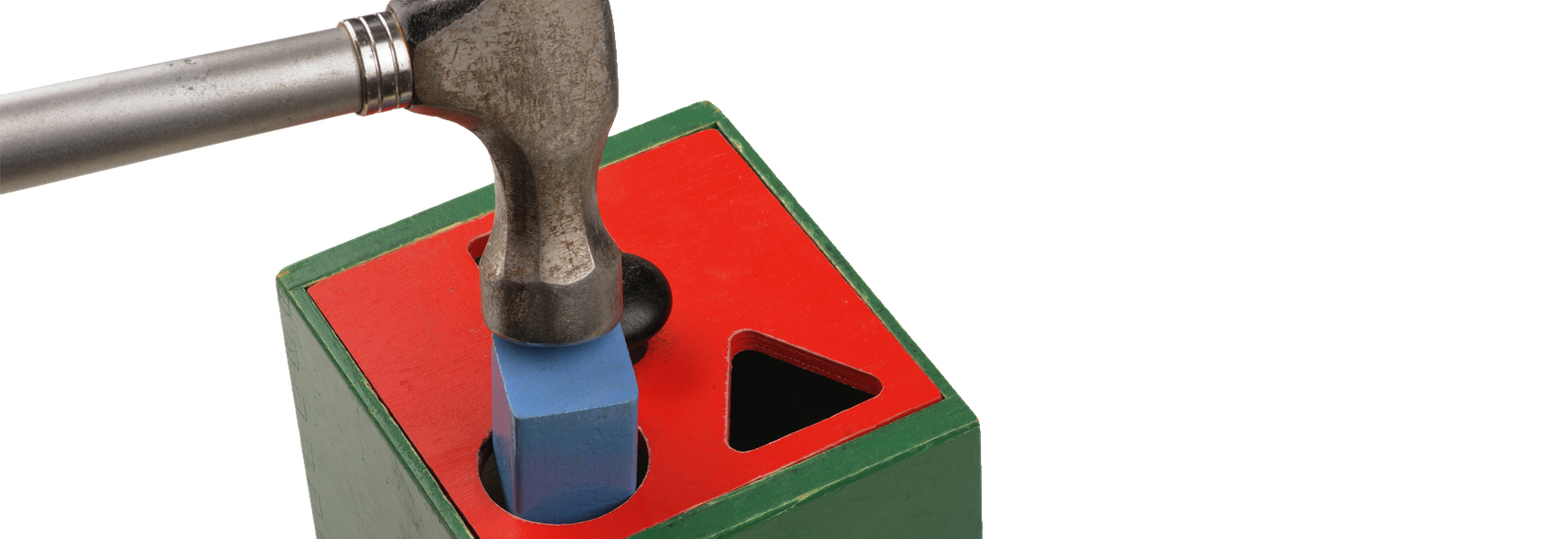The Right Tool for the Job
 A fundamental responsibility for any safety professional is to determine the root causes of an injury. Knowing the root causes should lead to safety improvements by putting preventive measures in place. Injuries are commonly caused by using inappropriate tools, or even using makeshift devices instead of tools. Abraham Maslow in his book The Psychology of Science paraphrased an earlier quote from Abraham Kaplan when he said, “If all you have is a hammer, everything looks like a nail.” This certainly applies to the employee who doesn’t have the right tool, isn’t trained properly, or is put under pressure to simply get the job done. Inevitably these circumstances lead to injury because using a hammer for everything just isn’t the safe way to operate.
A fundamental responsibility for any safety professional is to determine the root causes of an injury. Knowing the root causes should lead to safety improvements by putting preventive measures in place. Injuries are commonly caused by using inappropriate tools, or even using makeshift devices instead of tools. Abraham Maslow in his book The Psychology of Science paraphrased an earlier quote from Abraham Kaplan when he said, “If all you have is a hammer, everything looks like a nail.” This certainly applies to the employee who doesn’t have the right tool, isn’t trained properly, or is put under pressure to simply get the job done. Inevitably these circumstances lead to injury because using a hammer for everything just isn’t the safe way to operate.
Commonly we see employees using chairs or upside-down buckets instead of stepladders, pliers instead of wrenches, or lighters instead of flashlights. I’ve even seen an injury that resulted from an employee using a hockey stick to breakdown cardboard boxes. It’s easy for us, or even the supervisor involved in these incidents, to say “what was he thinking?” However, there is a lot more to the story than simply blaming the employee for poor judgment.
Ultimately, the individual employee is responsible for following the rules and working safely. This includes using the right tool for the job. But often the employee simply is not given the right tool. The average worker will then use whatever is at hand to get the job done and, in fact, is often applauded for ingenuity. This can only lead to further similar behaviors and ultimately result in an injury.
Remember, there are consequences for all behaviors. Some are positive and some are negative. If a worker is given a positive consequence for getting the job done despite the safety concerns it is much more likely that they will repeat the behavior. But make no mistake—using a chair instead of a stepladder will eventually lead to someone falling. That behavior must be stopped by providing the proper tool, in this case a stepladder, and by training all employees how to use it properly.
Ensuring your workers use the right tool is vital to safety success. This is done by having a systematic program in place that provides the right tools and the right training to all workers. This applies to all workers in all industries. Even an office worker can be hurt by using a folding metal chair instead of an office chair, by using a scissors as a staple remover, or by connecting too many electrical devices into a receptacle and overloading the circuit. All of these are prevented simply by providing a proper chair, a staple puller, and the proper number of receptacles—all accompanied by the correct training.
These situations speak directly to organizational culture. Culture is defined as, “the way we do things here.” Employees are responsible for doing the right thing by following the rules and using all tools properly. Supervisors are responsible for training and supervising, enforcing the rules by stopping unsafe behaviors, and providing the right equipment and tools. Upper management is responsible for providing the funding for those tools and the support the supervisors need to make it all happen safely. It is truly a team effort that will result in a safer workplace and a positive work environment. Tools cost money, there is no doubt. But the investment is well worth the cost when injury rates decrease, associated costs decrease, and morale increases.
For more information on proper tool use, check out this resource from OSHA, learn more on ergonomic hand tools from OH&S Online, and policyholders can access the all of MEMIC’s safety tips within the Safety Director.
By Randy Klatt

